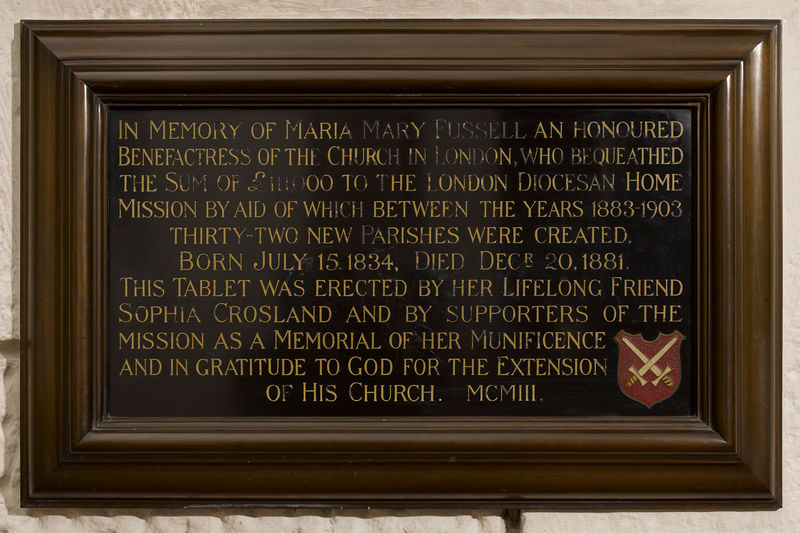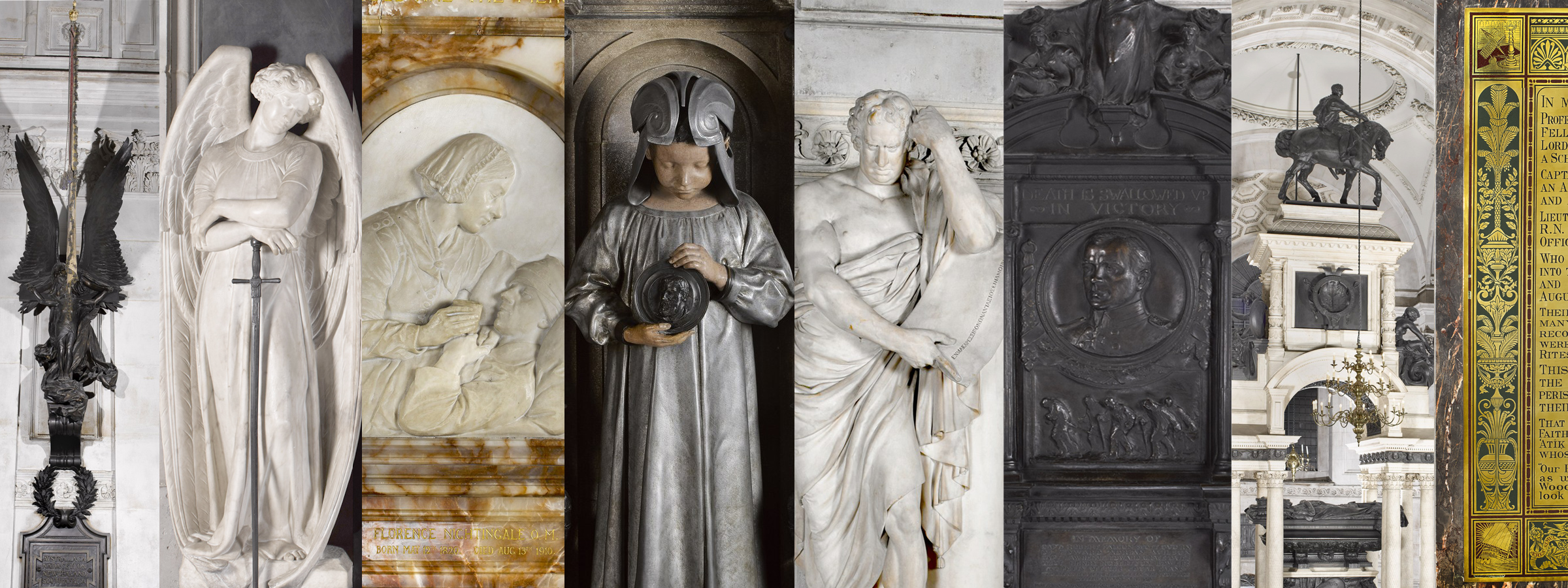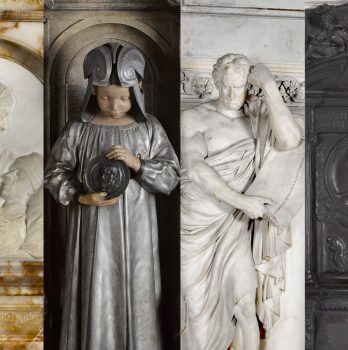Precentor of St Paul’s Cathedral, The Reverend Canon James Milne’s Response to the Monument to Maria Mary Fussell (1834–1881), by A. Blomfield Jackson, 1903


*** Trigger Warning***
Domestic violence is a theme in the video audio and the transcript, below.
Transcript
By James Milne
Maria Mary Fussell was born in 1834 into a wealthy manufacturing family, and on the death of her father received a momentous legacy.
On coming of age, Maria travelled to Europe but strenuously sought to conceal her true wealth. Alas, her confidence was betrayed by one of her servants, and a fellow traveller, Pierre Phillipe de Gendre, a bodyguard to the King of Naples, sought to befriend her. They were married in 1858 but from the very start their marriage was unhappy. Pierre was unfaithful and abusive. Such was the abuse that he inflicted upon Maria that she developed a tumour in her breast necessitating invasive surgery. Unable to endure him any longer she left the marital home and in 1871 began divorce proceedings, during which every salacious detail of her disastrous marriage was reported in the press. A divorce was granted and Pierre’s adultery and abuse was exposed. But the damage he had inflicted on her was to prove fatal. Ten years later she died from breast cancer and was buried, following a very simple funeral, near to her family home.
Maria left an estate valued at some fifteen million pounds today, the bulk of which she bequeathed to the London Diocesan Home Mission, which had been founded in 1857 by Archibald Tait, Bishop of London, to build new churches for his rapidly expanding diocese. In the years following her death, Maria’s extraordinary legacy, the largest of its kind, funded thirty-three new parishes.
I had never heard of Maria Mary Fussell until coming to St Paul’s and finding for myself the memorial erected to her by her great friend Sophia Crosland in 1904. It was a great surprise to discover not merely the facts of her life but to learn that Maria was my second cousin, four times removed.
Figures from our past are constantly breaking into our present in remarkable and unexpected ways. Inspired by the extraordinary generosity of Maria Mary Fussell and people like her, may we have the courage, the strength and the imagination to do in our age what they did in theirs.

About the Reverend Canon James Milne
The Reverend Canon James Milne is Precentor of St Paul’s Cathedral, London with responsibility for liturgy and music within the Cathedral. Having studied at the Universities of Wales and Edinburgh, James was ordained in 1998 to serve as Assistant Curate of St Mary Magdalene’s Church, Dundee. In 2001 he was appointed Rector of St Margaret’s Church, Lochee and a Chaplain for NHS Tayside. Before coming to St Paul’s he served as Rector of St Bride’s, Glasgow and Convenor of the Diocesan Development Team for Liturgy and Worship. He was also on the Liturgy Committee of the Scottish Episcopal Church, latterly as Convenor. James served as Sacrist at St Paul’s from 2015 to 2019.
About the Monument
The discreet monument plaque to Maria Mary Fussell (1834–1881), which is located in the crypt of St Paul’s, was designed by architect Arthur Blomfield Jackson (1868–1951). Its inscription narrates the impact of her legacy to the London Diocesan Home Mission, namely the creation of the thirty-two new parishes, but gives no indication of the turmoil that could be said to have had its root in her enormous wealth. As well as the domestic abuse she endured in her marriage and the scandal of her subsequent divorce, she found herself embroiled in legal challenges from family members, regarding her fortune. Whilst none of these was successful, Sarah Flew suggests in her book Philanthropy and the Funding of the Church of England, 1856–1914 (Routledge, 2020) that they were a ‘contributing factor in Maria’s decision to leave her fortune to the Church of England’.


